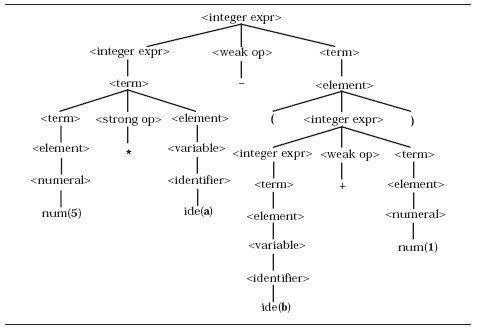5*a-(b+1)” of Wren is given on the right.
Two possible abstract syntax trees for the expression are given below.

A parse tree for the expression “5*a-(b+1)” of Wren is given on the right.
Two possible abstract syntax trees for the expression are given below.
|

|
